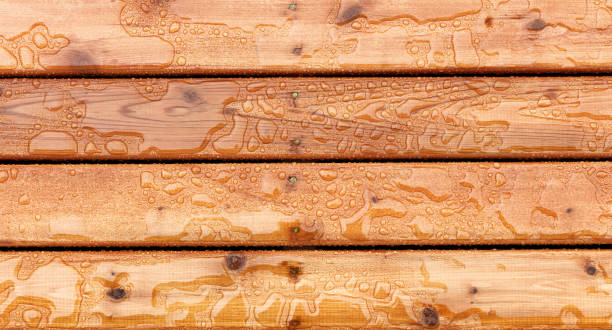Identifying Early Indicators of Structural Damage in Your Deck
Identifying Early Indicators of Structural Damage in Your Deck
Blog Article

A well-constructed deck increases the comfort and value of your house. But, with time, it may acquire issues compromising its safety. Catching early indicators of deterioration helps you prevent expensive repairs later. You don't have to be an authority to see little changes. You only have to know what to search for. For example, inspecting the support pillars and railing often might highlight little problems before they become major ones.
Living in coastal regions should make you more vigilant because of the humidity. Services such as deck repairs Central Coast can assist in early problem resolution and avoidance of larger ones.
Search for Uneven or Sagging Boards
Boards sag or seem uneven under your feet, which is one of the most typical indicators of difficulty. This can indicate that the support below is moving or that the timber is deteriorating. Walking over it might also produce creaking noises.
Though some boards might warp with age or dampness, if several are drooping, your deck requires more careful examination. Look for dips or bows in the boards using a straight item as a broom handle.
Look for Loose Fasteners or Rusted Ones
Keeping your deck solid depends much on nails, screws, and brackets. Rust or loosening of these components might lead the deck to shift or tremble.
Furthermore, rust can spread and weaken the strength of close by wood. Always check the regions surrounding fasteners for black stains, fractures, or soft patches. These might indicate that the stuff surrounding them is beginning to decay.
Observe Shaky Posts and Railings
A safe deck has robust supports and sturdy rails. Loose railings or moving posts under pressure indicate wear or deterioration. Especially for toddlers or older persons, these weak areas might be harmful.
Gently shake the railing. In case it moves or rattles, look at its deck frame meeting point. Common culprits include rotten wood or missing fasteners. Ignored, this can cause more severe harm later.
Keep An Eye Out For Mould And Rot
Usually, rot begins in areas with stored moisture. Most at risk are corners, stairs, and joints. When squeezed, the wood might feel soft, or you might notice green or black patches.
Though some mould might be surface-level, severe decay compromises the stability of the deck. Poking the wood with a screwdriver can help you to test. The region might be rotting if it sinks in readily.
In case you are replacing components of your house as well, think about speaking with an aluminium window and door supplier and installer. Many of them could assist in identifying issues around doorways leading to your deck and also look for wood rot during outside installations.
Wood or Surface Cracks
While big or expanding fractures are cause for worry, little cracks are usual as wood ages. These might show up at joints or on the surface. They can gather water and hasten decay.
Examine your flooring, staircases, and locations where two wood pieces join. In case you discover broad or spreading fractures, the deck can require part replacement or repairs. Cracked beams or joists compromise the support and are unsafe to overlook.
Loose or Sinking Footings
Often, concrete blocks or piers, your deck stands on footings. Soil can move with time, and these footings could sink or tilt. The entire system gets unstable then.
You could see that a pillar is no longer straight or that one side of the deck is lower. These are early alerts. If you have doubts, a second opinion is preferable. Acting quickly can help to lower repair costs and prevent more harm to your deck.
Gaps Between Joins or Boards
Deck boards should be spaced consistently. Moisture might be at work if gaps are growing or boards are separating from one another. This can also result from expansion and contraction from heat or cold.
On the other hand, large gaps could make it easier for dirt and water to accumulate. This hastens the degradation of the wood. Watch how the spacing alters seasonally. Uneven gaps often indicate deeper underlying structural changes.
Discolouration or Stains
Dark patches, blotches, or water stains might indicate stored moisture. Occasionally, mould or rust causes these stains. While some scars are deeper and indicate concealed harm, surface stains can be removed.

Particularly crucial to observe are stains close to metal components or where the deck joins the house. Often, they come before the wood begins to deteriorate. Regular sealing and cleaning will help to safeguard the deck.
Last Reflections
Keeping your deck sturdy and safe depends on catching issues early. In the end, it also helps you save money. All you need is time and a detailed inspection; you don't need expensive equipment.
Establish a regular deck inspection, particularly following inclement weather or seasonal changes. Tackle minor problems before they become significant ones. In case something seems too difficult, feel free to contact a specialist in deck repair Central Coast. They understand how to correct things safely.
Furthermore, if you are working on other areas of your house, such as doors or windows, it is beneficial to select a reliable aluminium window and door supplier and installer. These experts sometimes handle outside buildings and could notice deck issues as they operate. Report this page